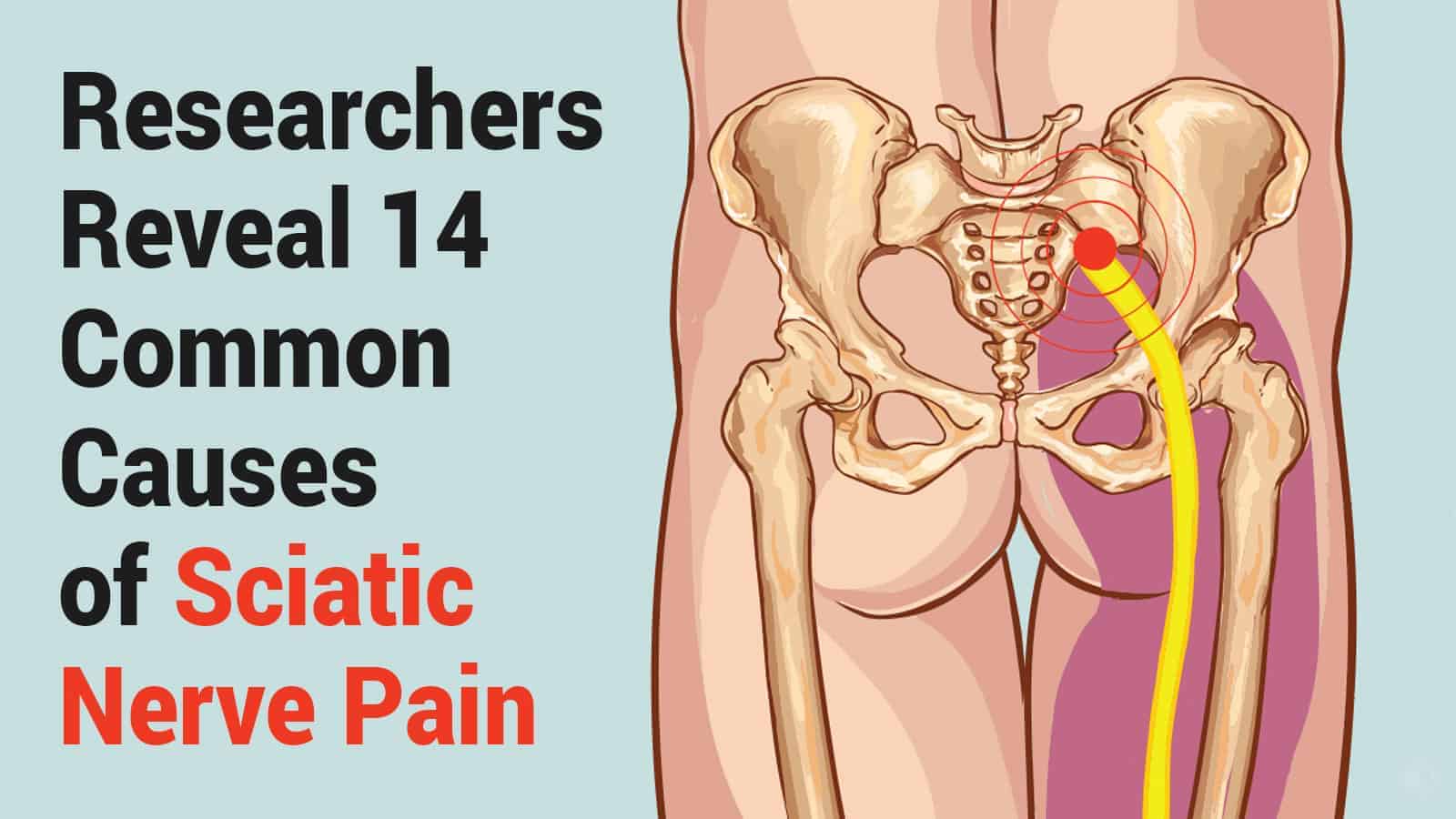Many adults will suffer from sciatic nerve pain sometime during their lifetime. This important nerve has its roots deep in the spinal column and runs from the lower back, through the buttocks, to just below the knee. As the longest and widest nerve in the human body, the sciatic is important for free mobility.
Sciatic nerve pain, or sciatica, may initially be confused with general back pain, but the discomfort quickly distinguishes itself with pain that radiates down through the leg and even the feet.
The sciatic nerve controls muscles in the lower legs. It supplies feeling sensation to the skin of the lower leg and foot. Sciatic pain is a symptom of back issues which can often be addressed and alleviated without surgery with early diagnosis. So if you begin to experience discomfort, it’s a good idea to see your doctor for an accurate diagnosis.
Symptoms of sciatica include:
- Lumbar, or lower back, pain
- Pain in the buttocks or one leg that grows worse when sitting
- Hip pain
- Burning or tingling down one leg
- A constant ache or sharp pain on one side of your butt
- Shooting pain down one leg that makes standing up difficult
- Feeling of electric shock down one leg
- Numbness in one foot or some parts of one leg
14 Causes of Sciatic Nerve Pain
The most common causes of sciatica stem from direct pressure on the nerve at the spinal column. There can be physical conditions or lifestyle factors that your doctor can help you identify so that you can begin to control and ultimately eliminate the pain. The earlier the treatment, the less chance of lasting damage to sensitive nerve roots and endings.
1. Herniated Disk
Considered the most common cause of sciatica, a herniated disk can cause compression of sciatic nerve roots. Also, if you have a lumbar herniated disc injury, inflammatory chemicals may leak out of the inner disc and irritate your nerve roots.
Heat and low-impact exercise are some of the treatment options to relieve pressure and restore strength to surrounding support muscles.
2. Bone Spurs
Bone spurs, or osteophytes, generally grow over a period of time and can cause a narrowing in the space where the nerves exit the spinal column or in the spinal column itself.
The narrowed space may compress the sciatic nerve, causing a pinched nerve. Rest and physical therapy can help alleviate pain and restore full motion to affected areas. Your doctor may also suggest a steroid shot to begin to lessen inflammation.
3. Spinal Stenosis
Adults 50 years old and older can begin to develop a narrowing of the spinal canal called spinal stenosis. The condition may be the result of worsening arthritis affecting vertebra and limiting their range of motion.
Spinal stenosis can compress nerves, causing tingling, pain, or even complete loss of sensation. Alternating heat and cold, gentle stretches, low impact exercise, and maintaining good posture, can bring some relief. If symptoms persist or worsen, it’s time to see your doctor for a more in-depth evaluation.
4. Spondylolisthesis
Sometimes one lumbar vertebra may slip forward over the one beneath it. The slippage may be caused by overuse, aging, arthritis, a birth defect, or injury. This condition, called spondylolisthesis, results in nerve roots being compressed or pinched.
Your doctor will be able to diagnose this condition with Xrays or an MRI. The most common treatment is a targeted physical therapy regimen, including exercises to strengthen muscles, stabilize the affected vertebra, and restore a full range of motion.
5. Pregnancy
Expectant mothers may experience sciatic nerve pain as a result of the extra weight of the baby pressing on the pelvis and hip joints. As the sciatic nerve makes its way through the pelvic area, it may become compressed. Pregnancy hormones may also cause a loosening and stretching of the ligaments that attach bones to joints, exposing the sciatic nerve to greater pressure.
There are a number of simple, relaxing stretching exercises to help relieve the pressure and thus alleviate the associated pain. Maintaining regular, low-impact exercise such as a 30-minute daily walk can help keep discomfort to a minimum.
6. “Back Pocket” Sciatica
This humorous moniker has been invented, especially for men who may sit for long periods of time with a fat wallet in their back pocket. But it also applies to anyone who habitually carries keys, a cell phone, or other bulky items there. If you have this habit and sit for extended periods at work or home, you may begin to experience pain radiating down that side of your body, from buttock to feet.
The best course of action would be to remove the pressure on the piriformis muscle, under which the sciatic nerve is located. By switching to a front pocket and using a phone or money clip, or even a jacket pocket as an alternative, you may relieve an actual “pain in the butt.”
7. Spinal Tumor
Spinal tumors are rare. However, it’s good to be aware of all the possibilities if you begin to experience sciatic nerve pain. Spinal tumors are abnormal growths that may cause sciatica when located in the lumbar region. Since these tumors may be either benign or cancerous, you’ll want to know if you have one sooner rather than later.
8. Diabetes
Diabetes affects your body’s use of blood sugar. This can lead to nerve damage, including to the sciatic nerve. Sufferers of type 2 diabetes are more prone to conditions such as radiculoplexus neuropathy, which can affect nerves in the thighs, hips, buttocks, or legs.
9. Lifestyle Factors
Sciatic nerve pain may be greatly alleviated by simple lifestyle changes. You may have a greater probability of a flare-up if you experience any of the following risk factors.
10. Stress
Some studies have led researchers to believe that sciatica, as well as other forms of back pain, could be triggered by anxiety. In times of stress, it is thought that the brain may deprive nerves in the lower back of oxygen, resulting in leg pain or weakness.
10. High-heel shoes
You may look good wearing them, but studies have shown that high-heels pitch your body weight forward, changing your body’s center of gravity. You’re then forced to flex your hips forward to stand upright. This pelvic position stretches the muscles running along your sciatic nerve, along with the nerve itself, resulting in irritation.
Also, high heels without cushions transfer the impact of walking to your back and hips. If you feel you must wear heels for the sake of your career, here are a few tips to minimize their negative impact on your lower back.
- Limit heel height to less than 2 inches
- Wear comfortable shoes to work and change upon arrival and before leaving
- Wear high heels with a comfortable, snug fit, so your feet don’t slip forward
 11. Tight clothing
11. Tight clothing
Some sciatica sufferers attest that tight-fitting jeans add to the pressure on the sciatic nerve and can cause a flare-up. Loose-fitting clothes provide relief from discomfort, so it pays to wear comfortable clothing that allows free movement.
12. Being overweight
Studies show that excessive weight can add pressure to the sciatic nerve, causing discomfort and pain. If you need to lose weight, it may help to talk to your doctor or nutritionist to develop a plan, including a balanced diet and regular exercise.
13. Posture
Posture is important, especially for those whose jobs require sitting in front of a computer for hours at a time. Learning to sit, walk, and just generally move with good posture can make a surprising difference. You can reduce stiffness and improve sciatic pain just by sitting or standing up straight.
Your body can learn unhealthy posture habits through muscle memory. It will then begin to habitually move or rest in ways that irritate the sciatic nerve. This can lead to bulging or herniated discs, sciatica, or even permanent nerve damage. It will take a conscious effort to retrain your posture habits.
14. Prolonged sitting
Sitting for long periods can cause a host of problems for your body, including sciatica. It’s recommended that you take a break, stand up, stretch, and even walk about a bit if possible every couple of hours in order to maintain mobility and relieve pressure.
 Final Thoughts on Living With Sciatic Nerve Pain
Final Thoughts on Living With Sciatic Nerve Pain
In most cases, sciatic nerve pain can be relieved or completely eliminated by proper stretching, regular low-impact exercise, and perhaps a few habit changes. Some may find one simple exercise solution, while others may require prolonged therapy.
Nerve damage is a serious matter, so you will want to educate yourself and quickly implement healing remedies that will keep you moving without sciatic pain. If the pain is severe, see your doctor in order to identify causes and treatment plans.
Even though it may not be appealing, one of the best things you do for yourself is to keep moving. Stretching, walking, using good posture, and wearing sensible clothes and shoes are key to relieving your pain and restoring your stamina for life.



















